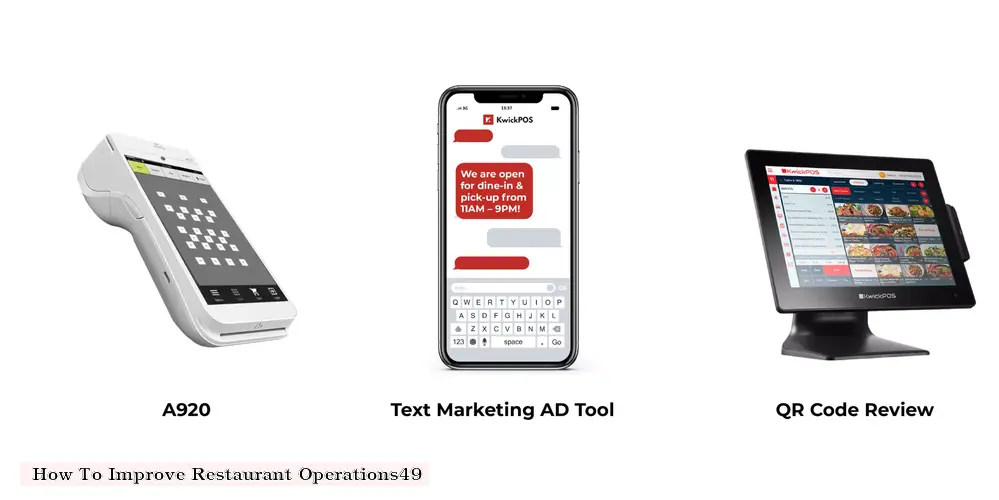

1. Analyze current operations: Start by evaluating your current restaurant operations. Identify areas that need improvement, such as order accuracy, food waste, staff productivity, and customer satisfaction. Use data analysis and customer feedback to pinpoint specific issues.
2. Improve staff training: Provide ongoing training for your staff to ensure they have the necessary skills and knowledge to perform their jobs effectively. Regular training can help improve service quality, reduce errors, and increase employee morale.
3. Optimize menu engineering: Review your menu to ensure it is optimized for profitability and customer satisfaction. Analyze your menu mix, pricing strategy, and portion sizes. Consider offering promotions, specials, and discounts to entice customers to try new dishes or order high-profit items.
4. Streamline workflow: Analyze your workflow to identify bottlenecks and inefficiencies. Implement processes that streamline workflow, such as using technology to automate tasks, implementing cross-functional teams, and reducing wait times.
5. Emphasize inventory management: Implement effective inventory management practices, such as ordering supplies in bulk, monitoring inventory levels, and reducing food waste. Use technology to track inventory levels, monitor expiration dates, and automate ordering processes.
6. Focus on customer satisfaction: Prioritize customer satisfaction by providing exceptional service, personalized experiences, and high-quality food. Use customer feedback to identify areas for improvement and implement changes that enhance the overall dining experience.
7. Leverage technology: Implement technology solutions that improve restaurant operations, such as online ordering platforms, reservation systems, and point-of-sale (POS) systems. These tools can help streamline workflow, reduce errors, and improve customer satisfaction.
8. Monitor financial performance: Regularly monitor financial performance metrics, such as revenue, costs, and profit margins. Analyze financial data to identify trends and areas for improvement. Implement cost-saving measures, such as reducing energy consumption, negotiating supplier contracts, and implementing labor management strategies.
9. Implement a continuous improvement culture: Foster a culture of continuous improvement by encouraging open communication, soliciting feedback, and implementing changes based on data-driven insights. Regularly review and evaluate restaurant operations to ensure they are aligned with business goals and customer needs.
In conclusion, improving restaurant operations requires a holistic approach that considers all aspects of the business, from staff training and inventory management to customer satisfaction and technology implementation. By implementing these strategies, you can enhance the efficiency and profitability of your restaurant business.
DISCLAIMER: This information is provided for general informational purposes only, and publication does not constitute an endorsement. Kwick365 does not warrant the accuracy or completeness of any information, text, graphics, links, or other items contained within this content. Kwick365 does not guarantee you will achieve any specific results if you follow any advice herein. It may be advisable for you to consult with a professional such as a lawyer, accountant, or business advisor for advice specific to your situation.

today
Copyright © 2025 Kwick365.com
Designed by KwickPOS is the best restaurant POS